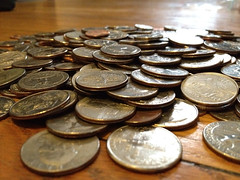MONEY SAVING TIPS FOR BUYING APPLIANCES
5 Tips for Buying Appliances:
1. Set your budget:
What you thought this wouldn’t be first? Know your top dollar budget number for this purchase. That way if you can save on your purchase you may choose to spend a bit more on a model with more features, or bank the rest for another future purchase.
2. Know your Market
It may seem counter-intuitive to ‘keep up with the Joneses,’ but knowing your housing market is key. Even if you don’t plan to sell soon, it’s a good idea to keep in mind what homebuyers are looking for in your area. For instance, if you live in a modest suburban neighborhood adding a Viking range to the tune of $10,000 would be overkill. When possible consider stainless steel appliances (especially ones with a no-smudge finish) since they are popular and great for resale.
3. Do your homework:
It should go without saying, but do not go into the appliance store without a little research under your belt.
Key items to research are:
- brand reliability
- features/colors
- warranties
- prices
- sales or upcoming promotion
Tip: Consumer Reports offers monthly signups and can be a great resource for detailed product info.
4. Take a test run:
Before you buy head to several stores and talk to the sale associates in the appliance department. Yes they are trying to make a sale (they typically work on commission after all), but they may share information you hadn’t considered like the case with our backwards laundry room setup. This will also give you the chance to get a ‘vibe’ for the salespeople in the store. In some cases that may determine where you spend your money (especially if the pricepoints are identical).
Tip: Leave the kids at home if you can. Bring a pad and paper, tape measure, and a camera or your smartphone to take photos, notes, and even measurements.
5. Go back to the drawing board:
Now that you have your choices narrowed down based on price range, features, your market, and other factors– go back to the drawing board. Take a final look at the options that are available to you, and double-check all your ‘homework’ before you go to make your purchase.
Now that you’re ready to purchase consider these tips to help you stretch your dollar even further.
5 Tips to Stretch your Appliance Dollar
1. Store credit cards: I know they seem like a bad idea, but for responsible credit users they can be a boon. Â Many offer 10% off and other perks that make it worth using a store card.
2. Buy on credit: Again it may seem irresponsible, but using your credit card can afford you an extended warranty without having to pay for one. Call your credit card company for details on how the protect your purchases.
3. Warranties: Speaking of extended warranties, just don’t do it. For the most part extended warranties cover very little for the cost, and often aren’t worth the cost.
4. Know the return policy: If you have an issue with your purchase you want to be sure you can return it. If you buy a floor sample, or scratch and dent appliance be prepared that it’s likely a ‘final sale,’ meaning no returns.
5. Register: Finally, make sure you register your new purchases with the brand. Yes it’s a means of tracking what you buy, but it’s helpful if you ever have an issue down the road.
Read more at http://www.thecentsiblelife.com/2012/02/money-saving-tips-for-buying-appliances/



